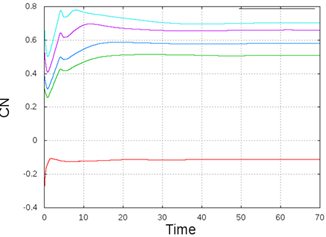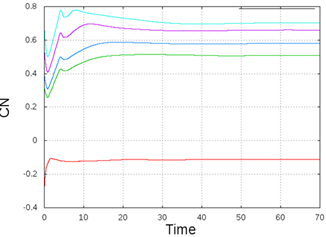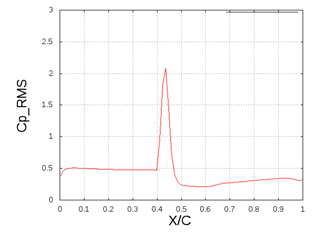Prediction of Transonic Buffet with URANS
JAXA Supercomputer System Annual Report April 2016-March 2017
Report Number: R16E0019
- Responsible Representative: Yuichi Matsuo(Aeronautical Technology Directorate, Numerical Simulation Research Unit)
- Contact Information: Atsushi Hashimoto(hashimoto.atsushi@jaxa.jp)
- Members: Atsushi Hashimoto, Syuusaku Takeda, Takashi Ishida
- Subject Category: Aviation(Aircraft)
Abstract
Transonic buffet is characterized by unsteady shock excursions. In the numerical prediction of transonic buffet boundary, URANS have used. This research, we introduced numerical perturbation method into FaSTAR to improve accuracy of the prediction. As a result, we found that this method could produce the transonic buffet more precisely.
Goal
We develop a buffet prediction method with URANS that is reasonable computational cost. By using this, we aim at prediction of high attack angle characteristics that is a difficult task for aircraft development.
Objective
Transonic buffet is characterized by unsteady shock excursions, in which self-excited periodic motions of shock waves appear. In the numerical prediction of transonic buffet boundary, Unsteady Reynolds Averaged Navier-Stokes (URANS) simulations have been attempted. However, several issues regarding prediction capability of buffet onset, such as dependence on turbulence models and dependence on grid resolutions are pointed out in the literatures that these factors could converge the shock oscillation and unable to predict buffet onset. In this study, we introduced numerical perturbation method into FaSTAR to improve capability of prediction buffet onset.
References and Links
N/A
Use of the Supercomputer
We used JSS2 for URANS simulation of NASA-CRM.
Necessity of the Supercomputer
In the numerical prediction of transonic buffet boundary, RANS have been attempted because of the low cost of calculation time. However, RANS takes a lot of times to calculate 3D wing. We have to reduce calculation cost because several computations are needed in the prediction. Accordingly, we need JSS2 which has many CPUs to do parallel calculation.
Achievements of the Year
RANS simulation without perturbation case and with perturbation case is attempted for NASA-CRM with the upstream Mach numbers from 0.847 and the Reynolds number is 2.26×106. Fig 1 shows normal force coefficient(CN) of RANS simulation without perturbation and Fig 2 shows CN of with perturbation. The former shows that CN history converges. However, the latter CN does not converge and oscillates.
Next, Fig3 shows computed root mean square(RMS) values of surface pressure coefficient(Cp). We obtained a peak at the shock wave location, which is similar to the experiment.
Publications
N/A
Computational Information
- Parallelization Methods: Process Parallelization
- Process Parallelization Methods: MPI
- Thread Parallelization Methods: n/a
- Number of Processes: 960
- Number of Threads per Process: 1
- Number of Nodes Used: 30
- Elapsed Time per Case (Hours): 10
- Number of Cases: 5
Resources Used
Total Amount of Virtual Cost(Yen): 5,384,904
Breakdown List by Resources
| System Name | Amount of Core Time(core x hours) | Virtual Cost(Yen) |
|---|---|---|
| SORA-MA | 3,279,179.02 | 5,311,342 |
| SORA-PP | 1,797.54 | 15,347 |
| SORA-LM | 0.00 | 0 |
| SORA-TPP | 0.00 | 0 |
| File System Name | Storage assigned(GiB) | Virtual Cost(Yen) |
|---|---|---|
| /home | 10.87 | 102 |
| /data | 2,730.54 | 25,757 |
| /ltmp | 2,201.14 | 20,763 |
| Archiving System Name | Storage used(TiB) | Virtual Cost(Yen) |
|---|---|---|
| J-SPACE | 3.75 | 11,590 |
Note: Virtual Cost=amount of cost, using the unit price list of JAXA Facility Utilization program(2016)
JAXA Supercomputer System Annual Report April 2016-March 2017





